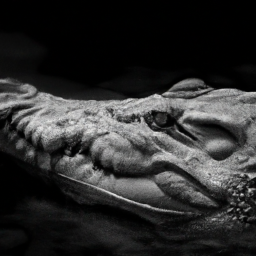As a cat owner, I am always fascinated by how my pet seems to enter a different world when she sleeps. Her whiskers twitch, her paws move as if she is running in place, and sometimes she makes gentle meows or chirps.
It’s clear that cats dream just like humans do – but what do those dreams mean? In this article, we’ll explore the fascinating science behind cat dreams and delve into the common themes that emerge in their nocturnal adventures. We’ll also discuss how dreaming can help cats work through stress and anxiety, as well as tap into their instincts and emotions.
So whether you’re a curious cat parent or simply someone who wants to understand these mysterious creatures a little better, read on to discover what your furry friend might be dreaming about while curled up at your feet.
Key Takeaways
- Cats experience both REM and non-REM sleep and spend about 15% of their total sleeping time in REM sleep patterns.
- Common themes in cat dreams include everyday activities like hunting prey or playing with objects around the house, as well as independence, mystery, and intuition.
- Cat dream patterns may differ from human dream patterns, and techniques like body language observation and sleep cycle tracking can be used to analyze them.
- Interpreting cat dreams can provide insight into a cat’s emotional and physical state, and understanding subtle cues can help strengthen the bond between a cat and its owner.
The Science of Cat Dreams
You’re probably wondering how your furry friend’s dreams work, and the truth is that cats experience both REM and non-REM sleep just like humans do. During REM sleep, which stands for Rapid Eye Movement, their bodies become temporarily paralyzed to prevent them from acting out their dreams. This stage of sleep is characterized by increased neural activity and brain waves similar to those seen during waking hours.
Interestingly enough, cats spend about 15% of their total sleeping time in REM sleep patterns. This means that they are dreaming and likely experiencing vivid dream sequences much like we do! Their dreams may involve familiar things such as chasing after birds or mice, playing with toys, or interacting with other animals. However, since we can’t communicate with our feline friends directly about their dreams, it’s hard to know exactly what they are dreaming about.
Despite the mystery surrounding cat dreams, there are some common themes that tend to pop up in their dream sequences. From twitching paws to vocalizations while sleeping, these behaviors suggest that cats often dream about everyday activities such as hunting prey or playing with objects around the house.
It’s important to remember that every cat is unique and may have different dream experiences based on their individual personalities and experiences.
Common Themes in Cat Dreams
As felines slink through our subconscious, they bring with them symbolic meanings that can reveal deeper truths about our waking lives. Common themes in cat dreams include independence, mystery, and intuition.
For example, dreaming of a black cat can represent the unknown or hidden aspects of ourselves or situations in our lives. Alternatively, a white cat may symbolize purity or innocence. Dream analysis is an important tool for understanding the messages contained within these feline visions.
By paying attention to details such as colors, actions, and emotions present in the dream, we can begin to unravel the mysteries of our subconscious minds. For instance, if you dream of a playful kitten chasing a ball of yarn around your house, it may be interpreted as a sign that you need more playfulness and spontaneity in your life.
Interpreting cat dreams can help us gain insight into our own needs and desires. By recognizing the symbolism present within these dreams, we can work towards personal growth and fulfillment.
In the next section about working through stress and anxiety, we’ll explore some practical ways to put this newfound self-awareness into action.
Working Through Stress and Anxiety
Managing stress and anxiety can be a challenging task, but understanding the symbolic meanings in our dreams, such as those involving cats, can help us gain insight into our subconscious minds and work towards personal growth.
Mindful meditation is an effective relaxation technique that can help individuals reduce stress levels and promote overall well-being. By focusing on breath and being present in the moment, meditation can help calm racing thoughts and improve mood.
Another useful tool for managing stress and anxiety is cognitive behavioral therapy (CBT). This type of therapy involves identifying negative thought patterns and replacing them with positive affirmations. By challenging negative thoughts, individuals can reframe their thinking to create more positive outcomes. CBT has been shown to be effective in reducing symptoms of anxiety and depression.
Exploring their instincts is another way individuals can work through stress and anxiety. Cats are instinctual creatures that rely on their intuition to navigate the world around them. By tapping into our own instincts, we can learn to trust ourselves more fully and make better decisions that align with our values.
Understanding what cat dreams mean is just one small step towards gaining a deeper understanding of ourselves and creating a more fulfilling life.
Exploring Their Instincts
Tap into your inner feline and trust your instincts like a cat stalking its prey. Have you ever noticed how cats seem to know exactly what they want and go after it with precision? As humans, we often ignore our natural instincts in favor of logic or societal norms. However, exploring behavior and understanding our natural instincts can lead us to make better decisions in life.
Cats have a variety of natural instincts that allow them to survive in the wild. From their hunting skills to their ability to sense danger, these instincts are ingrained in them from birth. As humans, we also have innate instincts that are often overshadowed by our rational minds. By exploring these behaviors and learning more about ourselves, we can tap into our own survival skills and make better choices.
Understanding your cat’s emotions is just one example of how exploring behavior can benefit both humans and animals alike. Cats may not communicate with words like we do, but they still experience emotions such as happiness, fear, and love. By paying attention to their body language and vocalizations, we can gain a deeper understanding of how they feel and respond accordingly.
This same level of awareness can be applied to human relationships as well. Taking the time to explore our natural instincts can lead us down a path towards making better decisions in life. Whether it’s tapping into our survival skills or understanding the emotions of those around us, there’s much to be gained from embracing our inner feline. Understanding your cat’s emotions is just one piece of the puzzle when it comes to living an intentional life filled with purposeful action towards serving others without expecting anything in return.
Understanding Your Cat’s Emotions
Get ready to deepen your bond with your feline companion by understanding their emotions on a deeper level. As cat owners, it’s important to recognize that cats express their emotions in different ways than humans do.
Understanding your cat’s body language is crucial in determining how they’re feeling. For example, a cat that arches its back and hisses is showing signs of fear or aggression, while a relaxed cat with dilated pupils is content.
Recognizing vocal cues is also an important aspect of understanding your cat’s emotions. Cats have a wide range of vocalizations including meows, purrs, growls, and even chirps. A high-pitched meow may indicate excitement or greetings, while a low growl may be a sign of anger or frustration.
Paying attention to these cues can help you better understand what your cat wants or needs. By understanding your cat’s body language and recognizing their vocal cues, you can deepen the emotional connection between you and your feline companion.
In the next section, we’ll explore the interpretations and symbolism behind some common dreams that cats have without realizing it as they sleep soundly beside us every night.
Interpretations and Symbolism
Understanding the interpretations and symbolism behind your feline companion’s dreams can deepen your bond with them and give you insight into their subconscious mind. As a cat owner, I’ve always been fascinated by the symbolic meanings and psychological interpretations of my cat’s dreams.
Here are some interesting bullet points to consider:
-
Cats’ dreams are believed to be connected to their natural instincts as hunters. They may dream about chasing prey, climbing trees, or defending their territory.
-
These dreams may also reflect their emotional state, such as feeling anxious or stressed.
-
Symbolic meanings can also be derived from the objects or animals that appear in your cat’s dreams. For example, if your cat is dreaming about birds, it could symbolize freedom or a desire for independence.
-
Dreams involving water might represent emotions or a need for cleansing.
By understanding these interpretations and symbols, we can gain a deeper appreciation for our cats’ emotional lives. Moving forward, let’s explore how dreaming impacts our feline friends’ health without skipping a beat.
Dreaming and Health
You’ll be surprised to know how much dreaming affects your furry friend’s overall health and well-being. Just like humans, cats need quality sleep to function properly. Sleeping helps them recharge their energy levels and repair damaged tissues.
During their slumber, they experience different sleep stages, including REM (Rapid Eye Movement) sleep. This stage is crucial for the interpretation of dreams. Interpreting dreams can provide insight into a cat’s emotional and physical state.
For instance, if you notice your feline friend twitching or moving its paws during its nap, it could be experiencing a pleasant dream about chasing mice or birds. However, if you observe excessive snoring or breathing difficulties while sleeping, it could indicate underlying health issues such as obesity or respiratory problems that require immediate attention.
The importance of sleep and interpreting dreams cannot be overemphasized when it comes to our feline friends’ overall well-being. As we move on to the next section on dreaming and bonding with your cat, you’ll discover how paying close attention to their dream patterns can help strengthen the bond between you and your furry companion.
Dreaming and Bonding
By paying attention to your cat’s dream patterns, you can deepen the bond between you and your furry companion. Bonding through dreams is a unique way to understand your cat’s inner world, as it allows you to interpret their behaviors on a deeper level.
When cats dream, they often exhibit physical signs such as twitching or moving their paws, which can indicate what they are dreaming about. Interpreting these behaviors can help you better understand your cat’s personality and preferences. For example, if your cat twitches while sleeping but also purrs softly, it may be dreaming about playing with its favorite toy or cuddling with its owner.
Understanding these subtle cues can help strengthen the bond between you and your cat by allowing you to provide them with the love and care that they need. Incorporating bonding through dreams into your relationship with your feline friend is an excellent way to deepen your connection with them.
By paying attention to their behavior while asleep, interpreting their dreams, and providing them with the love and care they need during those moments of vulnerability, you are sure to forge a strong bond that will last a lifetime. And speaking of dreams, did you know that cats have some fascinating sleep habits? Let’s explore some fun facts about cat dreams next!
Fun Facts About Cat Dreams
Cats are known for their unique sleep patterns and behaviors, including their tendency to dream. Most cats dream around three times per night during their REM (rapid eye movement) cycle.
The most common dream scenarios for cats involve hunting prey or playing with toys. Interestingly, cat dreams differ from human dreams in that they may be more instinctual and less influenced by external factors like emotions and experiences.
How often cats dream
Typically, cats do dream and their frequency of dreaming is similar to humans. Studies have shown that cats dream about 15 minutes every two hours, which means they spend approximately a third of their time sleeping in the dream state.
The duration of cat dreams usually lasts for around five to ten minutes, but it can vary depending on the individual cat’s sleep pattern. Interestingly, kittens and senior cats tend to dream more frequently than adult cats due to their higher need for REM (Rapid Eye Movement) sleep.
This stage of sleep is crucial for memory consolidation and emotional regulation in both humans and animals. Therefore, if you notice your cat twitching or making noises during their sleep, it’s highly likely they’re having a vivid dream experience.
In the next section, we’ll explore some of the most common dream scenarios that cats encounter during their snooze time.
The most common dream scenarios
You might think that cats’ dreams are just random, but in fact, they often dream about familiar activities and scenarios that reflect their daily lives. Nighttime behaviors such as hunting, grooming, and social interactions are common themes in cat dreams. Additionally, cats have been observed to experience lucid dreaming, where they become aware that they are dreaming and can control their actions within the dream.
To further emphasize this point, here are four of the most common dream scenarios for cats:
- Hunting prey
- Playing with toys or other cats
- Exploring new environments
- Interacting with their owners
Understanding these common dream scenarios can give us insight into a cat’s psyche and help us better understand their behavior during waking hours.
In the next section, we’ll explore the differences between cat and human dreams to gain a deeper understanding of how our furry friends experience the world while they sleep.
Differences between cat and human dreams
Moving on to the differences between cat and human dreams, it’s important to note that while both species do dream, their dream patterns may differ. Cats tend to have shorter sleep cycles and more frequent REM (Rapid Eye Movement) phases than humans. This means that cats may experience more intense dreaming periods throughout the night compared to humans.
When analyzing cat dreams, there are a few techniques that can be used. One method is observing their body language during sleep. For example, if a cat is twitching or moving its paws, it could indicate that they are in a deep REM phase and experiencing vivid dreams. Additionally, paying attention to their vocalizations such as meows or purrs can also give insight into their dream state. By understanding these patterns and behaviors, we can gain a deeper understanding of our feline friends’ subconscious minds and what they may be dreaming about.
| Cat Dream Analysis Techniques | Description |
|---|---|
| Body Language Observation | Observing physical movements such as paw twitches and eye movements |
| Vocalization Analysis | Listening for sounds such as meows or purrs during sleep |
| Sleep Cycle Tracking | Monitoring the length and frequency of each sleep cycle |
By utilizing these techniques in conjunction with an understanding of cat vs human dream patterns, we can gain valuable insight into our furry companions’ inner worlds.
Frequently Asked Questions
How do cat dreams differ from dog dreams or other animal dreams?
Comparing animal dreaming, I’ve analyzed dream patterns and found that cat dreams differ from dog dreams in their frequency of movement and level of interactivity. Other animal dreams vary depending on the species.
Can cats have nightmares, and how can you tell if they do?
Nightmares in cats are possible and can be identified by interpreting actions and understanding behaviors. Signs of distress such as shaking, meowing, or hiding may indicate a bad dream. It’s important to provide comfort and reassurance for your furry friend.
Are there any specific breeds of cats that are more prone to certain types of dreams?
Genetic predisposition and environmental factors can influence a cat’s dream patterns, but there is no evidence to suggest specific breeds are more prone to certain types of dreams. Understanding these factors can help create a comfortable sleeping environment for cats.
Do indoor cats dream differently than outdoor cats?
Different sleep patterns in indoor vs outdoor cats can lead to differences in dream content. Indoor cats may dream more frequently due to a lack of stimulation, while outdoor cats’ dreams may be influenced by their surroundings and experiences.
Can cat dreams provide insight into a cat’s past experiences or traumas?
Exploring the possibility of whether cat dreams can provide insight into past traumas or experiences is a topic of interest in animal behavior studies. Interpretation methods include observing body language, vocalizations, and other behaviors during sleep. Further research is needed to confirm these theories.
Conclusion
In conclusion, understanding cat dreams can provide valuable insight into our feline friends’ lives. Through analyzing common themes and interpreting symbolism, we can gain a deeper understanding of our cats’ emotions and instincts. Dreams can also serve as a tool for working through stress and anxiety, helping us to better care for our pets.
As we continue to study the science of dreaming, we may uncover even more information about how cats process information during sleep. Whether you’re bonding with your cat over shared dreams or simply marveling at their mysterious nocturnal behavior, there’s no denying that cat dreams hold a special place in our hearts.
So next time your furry companion dozes off, take comfort in knowing that they’re likely exploring new worlds and processing their experiences just like we do.










